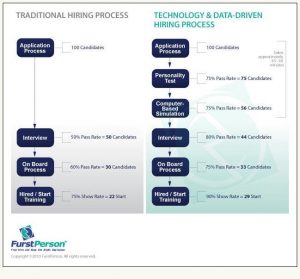
How much can you learn in six minutes? Would it be enough for you to feel confident in your abilities as a leader?
If you work at a large or midsize company, six minutes is the average amount of time your managers spend on training every six months, according to research from the U.S. Bureau of Labor Statistics. Let that sink in for a moment: Just one minute per month!
Most organizations recognize the importance of leadership development, but those responsible for making it happen often find themselves facing the all-too-familiar constraints of time and budget. Here’s a little secret: You don’t need to block out a lot of time for leadership development; you just need an ongoing commitment to doing it. (You probably do need more than one minute per month, but likely a lot less time than you already spend in company meetings.) You also need to ensure training is relevant for everyone and clearly communicate the value to them. In this post, the first in our Train Smarter, Not Harder series, we’ll cover five strategies that will allow you to make training more efficient and effective so you can make every minute count.
Identify Training Needs Based on Competencies
Using competency modeling to shape your leadership development programs ensures you are focusing only on the skills most relevant to your company’s future success.
If your company hasn’t taken the time to define the skills that are most important and drilled down to specific, observable behaviors that align with them, you are not training your future leaders as efficiently as you could be.
Make Training Accessible Anywhere
Traditional classroom-style learning still works well for teaching hands-on skills or those that require face-to-face interaction, but many of the skills your leaders need to master can be taught online. Consider incorporating more webinars and virtual instructor led programs into your plans. This not only makes training a lot less time-consuming for the participants and the people delivering the programs, it’s also significantly less expensive.
Another way to make learning more accessible is to invite employees to use a shared knowledge portal to access self-guided e-learning programs. You can make classes available for employees to take at their convenience through a learning management system or use a less formal collaborative platform (such as Slack) to share resources.
Assign ‘Homework’ With Formal Training Sessions
Most webinars or e-learning courses last between 30 and 60 minutes. That’s about as much time as anyone will spend watching something online in a single stretch, but it may not be enough time to cover everything, especially if you want participants to take a self-assessment or reflect on how they can apply what they’ve just learned.
Ask participants to prepare for each session by taking a few minutes to review material and jot down their questions in advance. After the session, you can send them some additional resources or assign an action item, such as trying a new tactic for staying connected to their virtual team members. Employees with a desire to become future leaders should be eager to take ownership of their own learning and career development.
Pair It With a Project
Action learning, or requiring employees to solve real problems, is another way to encourage employees to take responsibility for their own development. This works well for GlaxoSmithKline, which requires all participants of its year-long leadership development program to complete a capstone project.
Participants identify an area of need within the company, research potential solutions and present their best recommendation to the senior leadership team.
Use Managers as Mentors
Holding individual participants accountable for completing their work can be time-consuming, but there’s no reason why you should have to do it alone. Gain the support and commitment of participants’ managers or identify more senior employees in similar roles who can assist. Ask them to take the lead by discussing the trainee’s progress and setting new goals at regular intervals. These brief meetings can easily be integrated into an existing performance review process or become part of the weekly conversations trainees likely already have with their manager.
Leadership development doesn’t have to be time-consuming or draining; in fact, it shouldn’t be if it’s done strategically and purposefully. By making it easier for employees to take the initiative to learn when it’s most convenient for them and tying it to existing objectives, leadership development will become more of an ongoing initiative and feel less like a time-consuming nuisance.
Business & Finance Articles on Business 2 Community
(88)
Report Post






